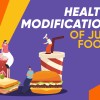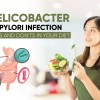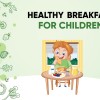
OBESOGENS- THE HIDDEN CHEMICALS MAKING YOU FAT
There are various chemicals that are playing a big role in weight gain and obesity in this era. Scientists are working hard to unravel the mystery of these chemicals- ‘obesogens’. This term was coined in 2006 on the basis of knowledge that exposure to certain chemicals during development is associated with disruption of normal metabolic processes of our body, along with increasing susceptibility to weight gain across lifespan. You must be thinking that till now what all created havoc of weight gain was poor nutrition and lack of activity, where are these chemicals coming from! Yes, they are also a contributing factor when it comes to weight gain. There has been convincing evidence gathered for these ‘endocrine disruptors’.
MECHANISM
These obesogens do not directly cause obesity rather, increase the susceptibility and sensitivity to weight gain, especially when exposed during development. They work either by changing the way a person’s fat cells develop by increasing their fat storage capacity or by changing the body’s regulatory mechanisms of fullness and hunger, thereby making it more difficult to lose and maintain weight.
EXPOSURE TO OBESOGENS
exposure can occur in a variety of ways: from our eating, drinking, or breathing them, or by absorption through our skin.
1.Eating and drinking: Persistent compounds take years or decades to degrade in the environment, and often these chemicals make their way into food and water even long after they are banned from use. Many persistent chemicals accumulate in animal fats, including livestock and fish. In addition, chemicals in plastics, cookware, or can linings, can leach into food that is prepared or stored in plastic or nonstick items. Pesticides can also be consumed with food.
The processing to make HFCS sweeter leaves small amounts of mercury in the syrup.
2.Breathing: Breathing in chemicals in air and dust is a common way that we are exposed to some obesogens. Flame retardants are found in furniture, fabrics and most plastic appliances such as televisions, computers, and kitchen appliances. As the plastic in these appliances degrades over time, the chemicals accumulate in house dust. Agricultural chemicals sprayed on crops can also drift into neighboring areas and contaminate air and dust. Because children often put items and hands into their mouths, they are more likely than adults to swallow dust. We also breathe in obesogenic air pollutants including very fine particles from auto exhaust, road dust, cooking, aerosols, and smoke from cigarettes and from burning wood or other fuels.
3.Absorption through skin: Chemicals found in household cleaners, cosmetics and other items can be absorbed through the skin when we use them. For example, BPA can enter the skin when we handle cash register receipts or paper money that can contain this chemical.
This compound, abbreviated as BPA, is worldwide used in plastics used to store food and water. It has long been known to mimic estrogen and now has been also regarded as an obesogen. It causes inflammation of fat cells and promotes their growth. Triclosan is often added to hand sanitisers, soaps and toothpastes for its antibacterial properties. However, it negatively affects thyroid function. Till now FDA considered it safe, but it is currently reviewing the safety and effectiveness of this hidden chemical causing obesity. Phthalates are added to plastics, children toys, soap, shampoo, nail polish etc. Studies have proved a positive relation between phthalate levels and weight gain. Always prefer phthalate-free products and toys.
HEALTH IMPLICATIONS
The most sensitive time for exposure is in early stages of development i.e. as a foetus or early years of life when the body’s weight control mechanisms are being developed. The effects of early-life exposure are irreversible and such people will fight a life-long battle of the bulge. Obesity in itself is a disease that invites various other diseases along with such as insulin resistance, metabolic syndrome etc.
EYE ON PREVENTION
Minimising exposure to environmental chemicals is of utmost priority. This is often challenging, since it is hard to know where and what products contain these chemicals.
PIECE OF ADVICE
Eat fresh fruits and vegetables
Choose fragrance-free products
Purchase furniture that has not been treated with flame retardants
Limit plastic use
Refrain from use of plastic in microwave
Eat organic
Use BPA free plastic container
Prefer phthalate-free products
Avoid canned and packaged food as much as practical.
Minimize or avoid the use of nonstick cookware.
Avoid using aerosol products
THE FINAL WORD
“If there’s no benefit and some degree of risk, why expose yourself and your family?”
Think upon this!






